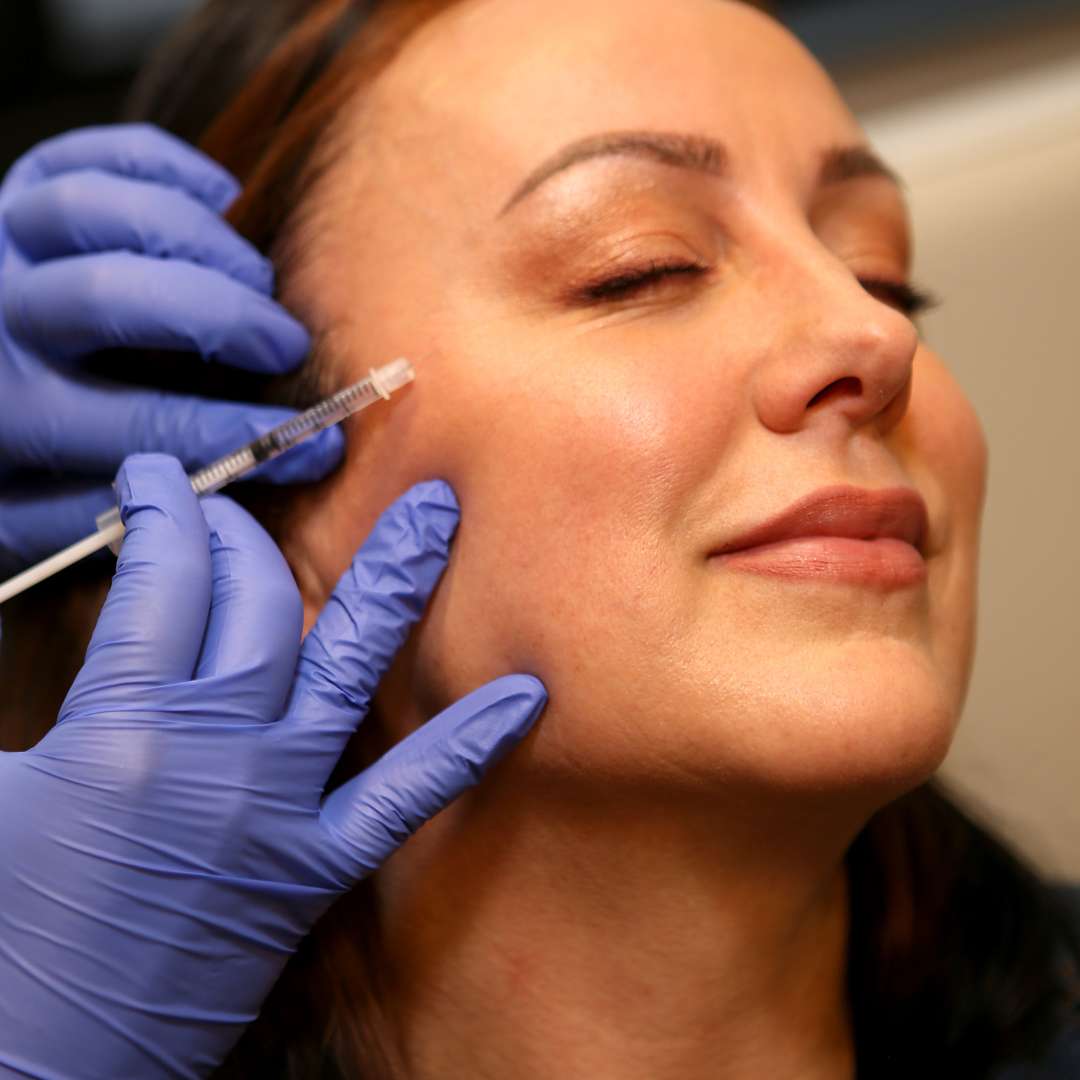For decades, Botox has been the gold standard in non-invasive cosmetic procedures, effectively smoothing wrinkles and helping individuals achieve a more youthful appearance. However, as the field of aesthetic medicine continues to advance, a range of alternative neurotoxins has emerged, challenging the dominance of Botox. In this blog post, we’ll be taking a closer look at what these different neurotoxins have to offer so that you can decide which one is right for you in order achieve the most natural-looking results.
Botox Background
Botox is derived from botulinum toxin, initially used in medicine in the 1960s for eye conditions by paralyzing specific muscles. Later, a dermatologist discovered its remarkable wrinkle-reducing properties and paved the way for its cosmetic applications. FDA approval for the treatment of frown lines and between the eyebrows took place in 2002. Today, Botox has a rich history in medicine, and its potential for use in the field continues to grow.
Comparing Botox Brands
When it comes to treating wrinkles, the word “Botox” is often the first thing that comes to mind. However, what many people don’t realize is that Botox is simply a brand name for a type of neurotoxin that temporarily paralyzes muscles, ultimately resulting in the reduction of wrinkles. In fact, there are several different brand names/ types of neurotoxins on the market that are used to treat the signs of aging. By understanding the differences between these various neurotoxins, individuals can work with their medical professionals to determine the best treatment option for their specific anti-aging needs.
There are four different FDA approved neurotoxins: Botox, Dysport, Jeuveau, and Xeomin.The active ingredient in each of these four products is Botulinum Type A (BoNT-A), but each brand is uniquely formulated and therefore each substance works differently within your body. Let’s break down the subtle differences between each of them.
- Botox was the first FDA approved neurotoxin in 2002
- Botox is widely used to reduce the appearance of wrinkles, such as crow's feet and frown lines
- Botox is also utilized for medical purposes, such as treating migraines, excessive sweating (hyperhidrosis), and muscle spasms
- Takes effect in one week with maximum effect in two weeks
- Lasts 3 months
- Dysport was FDA approved in 2009
- Dysport spreads more easily beyond the injection site, which can be advantageous for treating larger areas such as the forehead
- Takes effect slightly faster than Botox, within 3-4 days-maximum effect in two weeks
- Lasts 3 months
- Xeomin was FDA approved in 2011
- Xeomin is unique as it is a "naked" neurotoxin, meaning it does not contain accessory proteins found in other neurotoxins
- Due to its purity, it may be appealing to individuals concerned about possible immune responses or antibody resistance
- Takes effect in about 3-4 days with maximum effect in two weeks
- Lasts 3 months
- Jeuveau, commonly known as “NewTox” was FDA approved in 2019
- Is particularly effective at improving the appearance of moderate to severe glabellar lines (frown lines between the eyebrows)
- Company is Evolus
- Takes effect in 2-3 days with maximum effect in two weeks
- Lasts 3 months
How do I Know Which Toxin Is Right for Me?
While the differences between the brands are subtle, they all address the same concerns. Choosing the optimal neurotoxin requires thoughtful consideration. Some factors to help with your decision-making process include:
- Consult with a qualified professional who will analyze your unique facial anatomy, skin condition, and desired outcome to suggest the most suitable neurotoxin
- Determine the region of treatment so the brand that will best treat that area can be utilized, such as Dysport for the forehead due to its spreadability
- Communicate, preferences, expectations and desired outcomes with your healthcare provider to tailor the treatment
- Share allergies with your provider, Informing them of any past cosmetic treatments, medical history, and known reactions to neurotoxins or related substances to ensure the safest and most suitable selection for your treatment
Botox has long been the dominant neurotoxin used in cosmetic treatments. However, alternatives such as Dysport, Xeomin, and Jeuveau have emerged, providing similar outcomes. To determine the most suitable option, it is necessary to consult a qualified professional, who will consider factors such as the treatment area, personal objectives, and medical history. It’s crucial to maintain regular follow-up appointments to monitor and maintain the results effectively. Embrace the evolving world of neurotoxins and discover the alternative that empowers you to achieve your desired youthful appearance.




